
Toshiba EMI Odeon and Apple Label
02. Beatles No.2! (The Beatles' Second Album) (OR-7058, OR/AR-8027)
(Update: 19th. April 2024)



| TITLE | THE BEATLES'
SECOND ALBUM (BEATLES NO.2!) |
||||
| CATALOG NUMBER | OR-7058 |
||||
| RELEASE DATE | Promotional Record (First Press: 15th
June.1964) |
||||
| TRACK LISTING | SIDE 1 | SIDE 2 | |||
| Can't Buy Me Love |
Roll Over Beethoven |
||||
| Do You Want To Know A Secret |
Misery |
||||
| Thank You Girl |
Boys |
||||
| A Taste Of Honey |
Devil In Her Heart |
||||
| It Won't Be Long |
Not A Second Time |
||||
| I Wanna Be Your Man |
Money | ||||
| There's A Place | Till There Was You |
||||
| FRONT --> Click! | BACK --> Click! | SIDE 1 --> Click! | SIDE 2 --> Click! | DISK | |
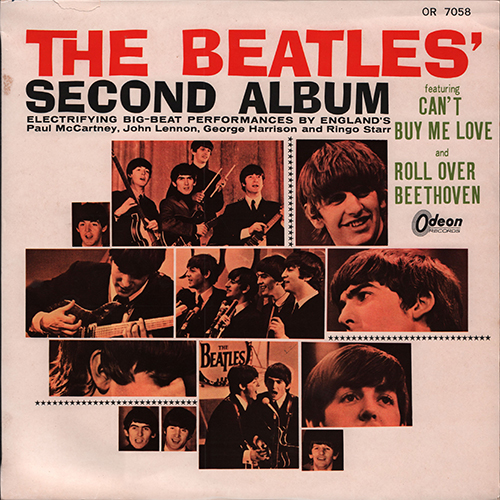 |
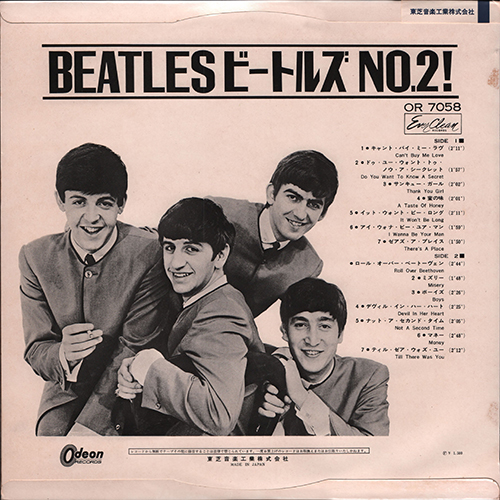 |
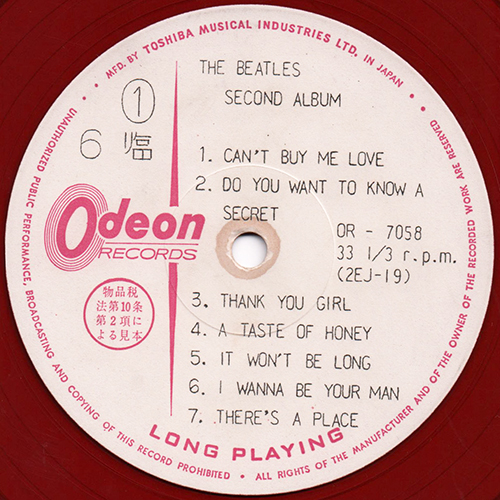 |
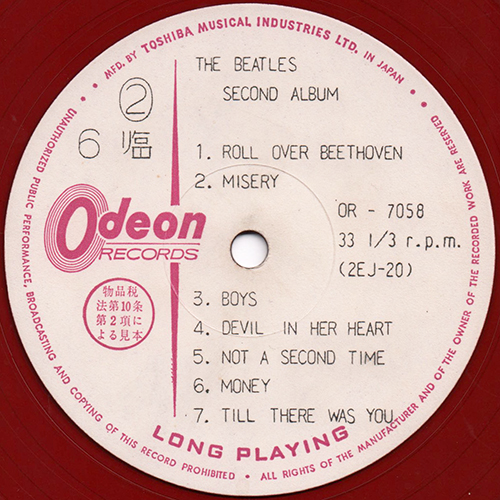 |
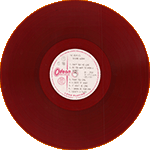 |
|
| INNER SLEEVE |
LYRIC
SHEET (Slip Sheet Type)
|
The
original
plain white inner bag has a fold-over flap at the top of the
bag to prevent the record from falling out. The lyric sheet is slip sheet type. |
|||
| FRONT --> Click! | BACK --> Click! | FRONT --> Click! | BACK --> Click! | ||
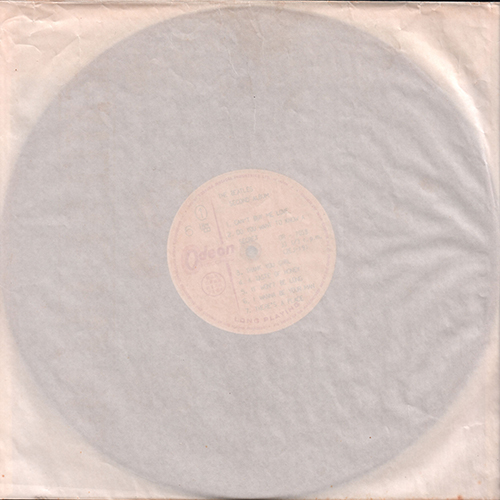 |
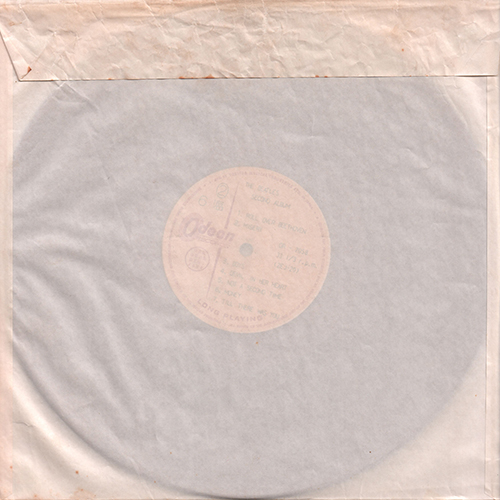 |
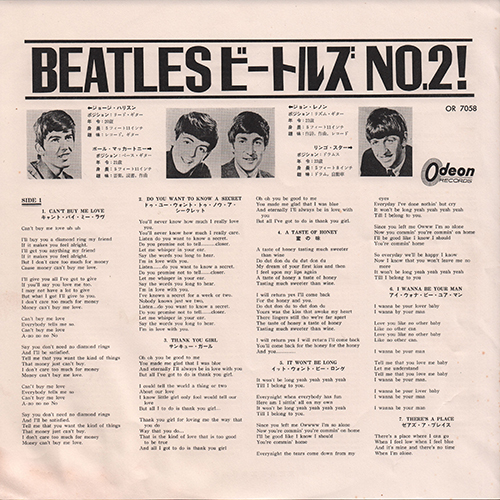 |
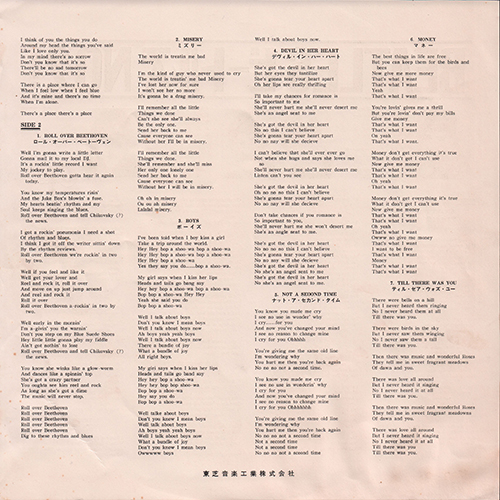 |
||
| LYRIC SHEET CLOSE
UP |
|||||
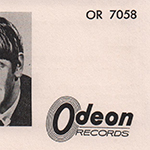 |
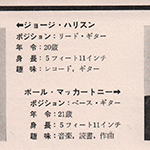 |
Catalog number and
Odeon logomark were printed at the upper right corner of the
lyric sheet. Member's profile was printed. |
 |
||
| The company name "Toshiba Musical Industries Ltd." were printed on the lyric sheet. | |||||
| "HANKAKE" OBI CLOSE UP | |||||
| FRONT |
BACK --> Click! | ||||
| Sorry, I don't have it. (The obi is torn and gone) |
 |
||||
| In the early 1960s, a short-lived hankake obi, or “half obi” was used. These were small strips of paper that simply folded over the top of the cover. | |||||
| FRONT COVER CLOSE UP | BACK COVER CLOSE UP | ||||
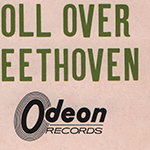 |
 |
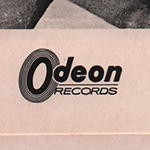 |
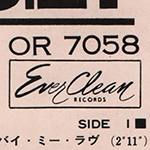 |
Toshiba pressed a lot of their records on red, “Everclean” vinyl. The Everclean vinyl was designed to be less prone to collecting static electricity and dust than the more common black vinyl. | |
| Odeon logo and catalog No. "OR 7058" were
printed on the front sleeve. |
|||||
| BACK COVER CLOSE UP | |||||
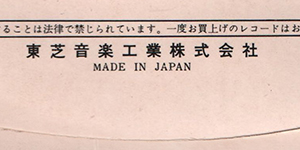 |
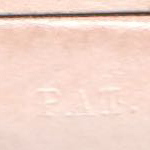 |
Single
type.
Full laminated soft cover. Twin-flipback cover (round type). The words "PAT." was embossed at the bottom of the back cover. |
 |
||
| "Toshiba Musical Industries Ltd." and "F-¥1,500" were printed at the bottom of the back cover. | |||||
| LABEL CLOSE UP | |||||
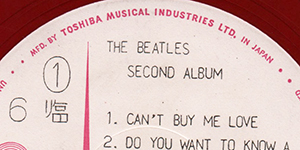 |
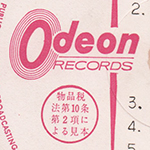 |
Odeon white label (promotional
use only). The print in black has unusual "hand lettered" look to it quite unlike the regular commercial version. The words "MFD. BY TOSHIBA MUSICAL INDUSTRIES LTD. IN JAPAN" was printed at the perimeter. |
|||
| LABEL CLOSE UP | |||||
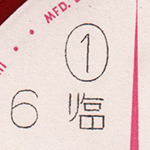 |
The release month (June) is in black and appears above and to the left of the title. | 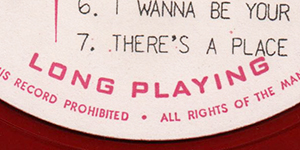 |
The words "LONG PLAYING" was printed at the bottom of the label. | ||
| LABEL CLOSE UP | |||||
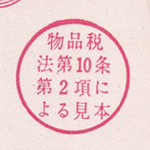 |
Here is a close-up of the circled text: "Sample under Article 10, Clause 2 of the Commodity Tax Law". | 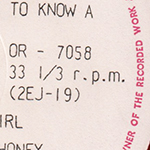 |
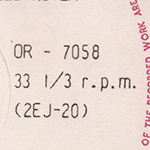 |
Catalog number and matrix number were printed at the right side of the center hole. | |
|
OTHER ITEM
|
|||||
| - | |||||
| RECORD LABEL | Odeon White Label (for promotional use
only) |
||||
| MIX | MONO |
||||
| MATRIX No. | SIDE 1 | 2EJ-19 1 |
|||
| SIDE 2 | 2EJ-20
1 |
||||
| PRESS MARK | None |
||||
| VINYL COLOR | RED |
||||
| RECORD COMPANY'S NAME | SLEEVE | Toshiba
Ongaku kogyo Kabusikigaisha |
|||
| LABEL | MFD. BY
TOSHIBA MUSICAL INDUSTRIES LTD. IN JAPAN |
||||
| SYMBOL/PRICE | F - ¥1,500 |
||||
| LYRIC SHEET STYLE | Slip Sheet Type |
||||
| COVER FORM | Single type. Full laminated soft cover. Twin-flipback cover (round type) |
||||
| INNER SLEEVE |
Plain
White Inner bag |
||||
| OBI |
"Hankake" Obi White in design with dark blue Japanese text. Obis draped from the top, not forming a loop. |
||||
| COVER DESIGN/ PHOTO/ NOTES | - |
||||
|
COMMENTS
|
Odeon
white label (promotional use only). The words "MFD. BY TOSHIBA MUSICAL INDUSTRIES LTD. IN JAPAN" was printed at the perimeter. Odeon promo LPs feature the perimeter print, Odeon logo, and circled text in red and all other printing in "hand lettered" black. Note the release date above the Odeon logo. The label design is similar to that used for the regular commercial Odeon LPs. These are most commonly found on red vinyl. In Japan, promotional records have traditionally been provided at no charge to radio stations, record shops, and the mass media to increase the sales of a record or in some cases to promote a tour. There are two types of promotional releases. Type-1: This type is called the white label promo for which a unique label has been made. The label design of Odeon white label singles is very similar to that of regular commercial Odeon singles. The promo version, however, features the perimeter print, Odeon logo, and circled text in red and all other printing in black. The print in black has an unusual "hand lettered" look to it quite unlike the regular commercial version. The release date is in black and appears above and to the left of the title. Most usually, the regular cover is used with appropriate alterations to prohibit commercial sale. Type-2: The second type of promo record is less elaborate and is called a sticker promo. It is simply a regular commercial release that has a promo sticker affixed to the cover. This type of promo is occasionally found on post-1975 releases. Red vinyl: Besides good sound and quality printing, Japanese records also offered some other things of interest to the collector. One of the primary manufacturing companies in Japan, Toshiba, pressed a lot of their records on red, “Everclean” vinyl from 1958 through 1974 (maybe). While not pressed as collectors’ items, these red vinyl pressings are more sought out by collectors than their black vinyl counterparts. The Everclean vinyl was designed to be less prone to collecting static electricity and dust than the more common black vinyl. The obi: A. K. A."Hankake" Obi It is made from very thin paper stock. It is white in design with dark blue Japanese text. It also features an Odeon logo, catalogue number and price information. While most Japanese records feature local music, a lot of music fans there like foreign music, as well. The language barrier in Japan presented a problem – should foreign album covers be changed for Japanese albums? The solution was the obi, which means “belt” or “sash”. The obi is a strip of paper, usually about two inches wide, that wraps vertically around the album cover, containing information about the artist and album in Japanese. As these strips of paper were fragile and easily torn, they are often missing, especially since consumers in the 1950s and 1960s attached little significance to them. Finding Japanese records made prior to 1970 that still have the obi intact can be quite difficult, and for some albums, nearly impossible. The inclusion of the obi can dramatically affect the price of some Japanese records, sometimes increasing the price by a factor of ten. While usually found in a wraparound strip, there are other versions of the obi that have occasionally been used. In the early 1960s, a short-lived hankake obi, or “half obi” was used. These were small strips of paper that simply folded over the top of the cover. These were problematic for retailers, as they tended to easily fall off of the record. |
||||
| TITLE | THE BEATLES'
SECOND ALBUM (BEATLES NO.2!) |
||||
| CATALOG NUMBER | OR-7058 |
||||
| RELEASE DATE | 15th
June.1964/First Press |
||||
| TRACK LISTING | SIDE 1 | SIDE 2 | |||
| Can't Buy Me Love |
Roll Over Beethoven |
||||
| Do You Want To Know A Secret |
Misery |
||||
| Thank You Girl |
Boys |
||||
| A Taste Of Honey |
Devil In Her Heart |
||||
| It Won't Be Long |
Not A Second Time |
||||
| I Wanna Be Your Man |
Money | ||||
| There's A Place | Till There Was You |
||||
| FRONT --> Click! | BACK --> Click! | SIDE 1 --> Click! | SIDE 2 --> Click! | DISK | |
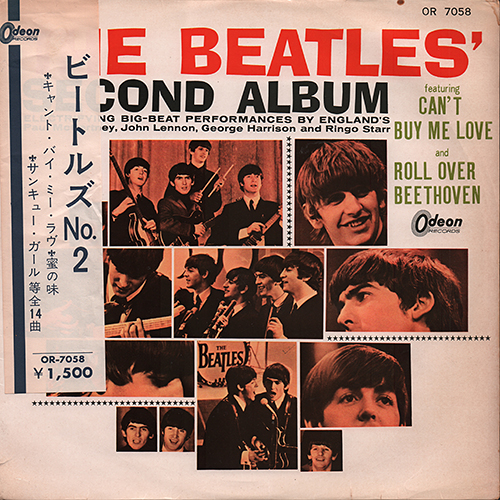 |
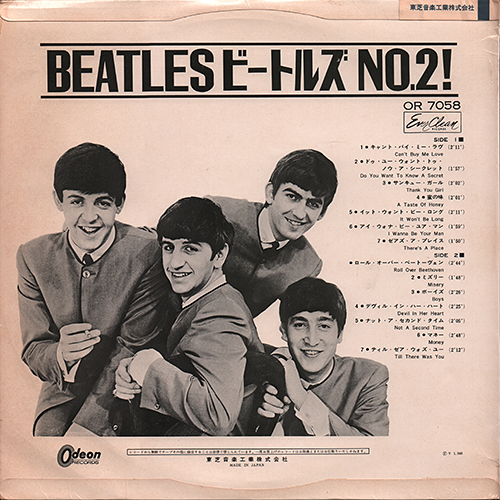 |
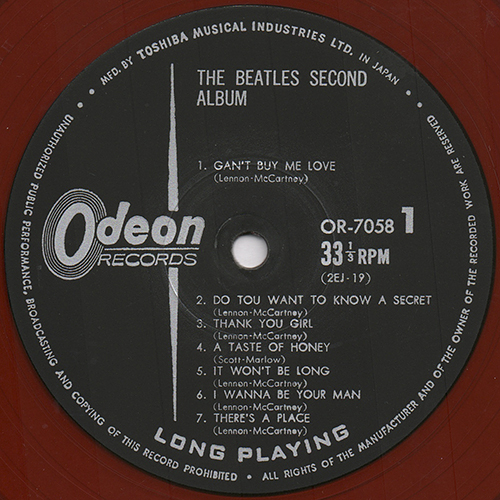 |
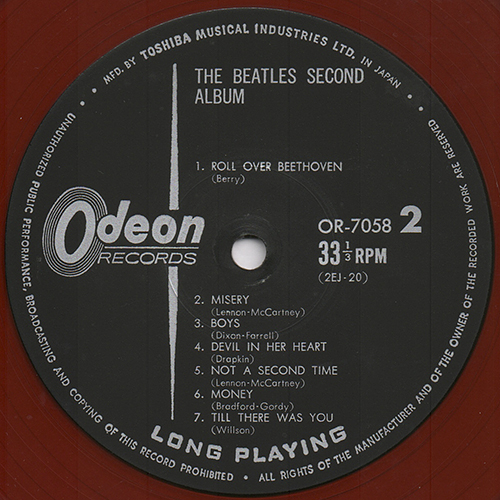 |
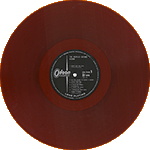 |
|
| INNER SLEEVE |
LYRIC
SHEET (Slip Sheet Type)
|
The
original
plain
white inner bag has a fold-over flap at the top of the bag
to prevent the record from falling out. The lyric sheet is slip sheet type. |
|||
| FRONT --> Click! | BACK --> Click! | FRONT --> Click! | BACK --> Click! | ||
 |
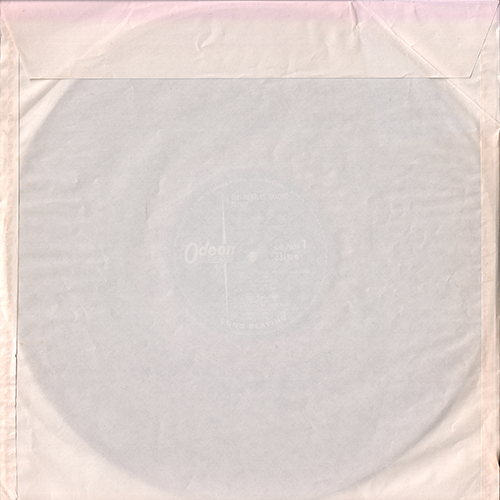 |
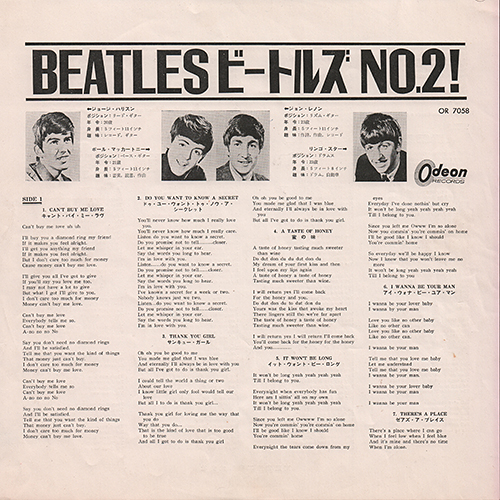 |
 |
||
| LYRIC SHEET CLOSE
UP |
|||||
 |
 |
Catalog number and the company name "Toshiba Musical Industries Ltd." were printed on the lyric sheet. | |||
| "HANKAKE" OBI CLOSE UP | |||||
| FRONT --> Click! | BACK --> Click! | ||||
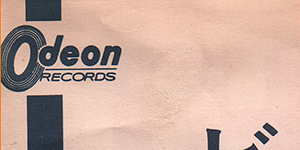 |
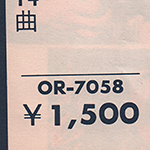 |
 |
|||
| In the early
1960s, a short-lived hankake obi, or “half obi” was used.
These were small strips of paper that simply folded over the
top of the cover. |
|||||
| FRONT COVER CLOSE UP | BACK COVER CLOSE UP | ||||
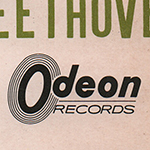 |
 |
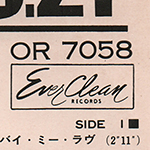 |
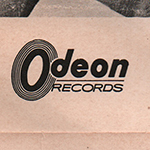 |
Toshiba pressed a lot of their records on red, “Everclean” vinyl. The Everclean vinyl was designed to be less prone to collecting static electricity and dust than the more common black vinyl. | |
| Odeon
logo mark and catalog number "OR 7058" were printed on the
front sleeve. |
|||||
| BACK COVER CLOSE UP | |||||
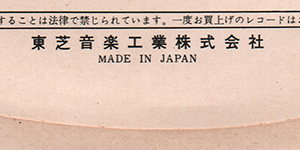 |
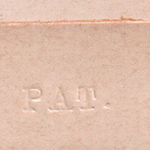 |
Single
type.
Full
laminated soft cover. Twin-flipback cover (round type). The words "PAT." was embossed at the bottom of the back cover. |
 |
||
| "Toshiba Musical Industries Ltd." and "F-¥1,500" were printed at the bottom of the back cover. | |||||
| LABEL CLOSE UP | |||||
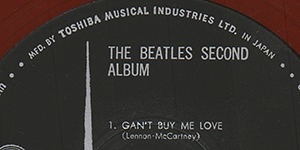 |
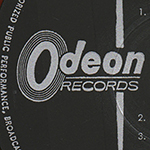 |
Toshiba
pressed a lot of their records on red, "Everclean" vinyl
from 1958 through 1974 (maybe). The Everclean vinyl
was designed to be less prone to collecting static
electricity and dust than the more common black vinyl. The
words "MFD. BY TOSHIBA MUSICAL INDUSTRIES LTD. IN JAPAN" was
printed at the perimeter. |
|||
| LABEL CLOSE UP | |||||
 |
About the song title of the 1st. song on side-1, this label was misprinted "GAN'T BUY ME LOVE" instead of "CAN'T BUY ME LOVE" | ||||
| LABEL CLOSE UP | |||||
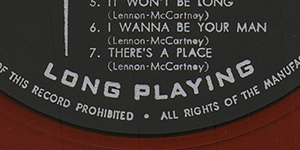 |
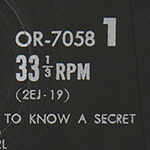 |
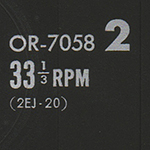 |
The words "LONG PLAYING" was
printed at the bottom of the label. Catalog number and matrix number were printed at the right side of the center hole. |
||
|
OTHER ITEM
|
|||||
| - | |||||
| RECORD LABEL | Odeon Label Type-1 (with the words "LONG
PLAYING") |
||||
| MIX | MONO |
||||
| MATRIX No. | SIDE 1 | 2EJ-19 17 |
|||
| SIDE 2 | 2EJ-20
16 |
||||
| PRESS MARK | F5
-> H5 -> L5 |
||||
| VINYL COLOR | RED |
||||
| RECORD COMPANY'S NAME | SLEEVE | Toshiba
Ongaku
kogyo Kabusikigaisha |
|||
| LABEL | MFD. BY
TOSHIBA MUSICAL INDUSTRIES LTD. IN JAPAN |
||||
| SYMBOL/PRICE | F - ¥1,500 |
||||
| LYRIC SHEET STYLE | Slip Sheet Type |
||||
| COVER FORM | Single type. Full laminated soft cover. Twin-flipback cover (round type) |
||||
| INNER SLEEVE |
Plain
White
Inner bag |
||||
| OBI |
"Hankake" Obi White in design with dark blue Japanese text. Obis draped from the top, not forming a loop. |
||||
| COVER DESIGN/ PHOTO/ NOTES | - |
||||
|
COMMENTS
|
Black Odeon label with
silver print. The words "LONG PLAYING" was printed at the bottom of the label. Toshiba released the first Japanese record featuring the Beatles. When this record was released in 1964, Toshiba's official name was "Toshiba Musical Industries Ltd." and they used the Odeon label for this and subsequent Beatles releases. This is the second album released in Japan. The Japanese version looks similar to the U.S. version but has a different track listing, a red (rather than brown) front cover title, and a different back cover. Red vinyl: Besides good sound and quality printing, Japanese records also offered some other things of interest to the collector. One of the primary manufacturing companies in Japan, Toshiba, pressed a lot of their records on red, “Everclean” vinyl from 1958 through 1974 (maybe). While not pressed as collectors’ items, these red vinyl pressings are more sought out by collectors than their black vinyl counterparts. The Everclean vinyl was designed to be less prone to collecting static electricity and dust than the more common black vinyl. The obi: A. K. A."Hankake" Obi It is made from very thin paper stock. It is white in design with dark blue Japanese text. It also features an Odeon logo, catalogue number and price information. While most Japanese records feature local music, a lot of music fans there like foreign music, as well. The language barrier in Japan presented a problem – should foreign album covers be changed for Japanese albums? The solution was the obi, which means “belt” or “sash”. The obi is a strip of paper, usually about two inches wide, that wraps vertically around the album cover, containing information about the artist and album in Japanese. As these strips of paper were fragile and easily torn, they are often missing, especially since consumers in the 1950s and 1960s attached little significance to them. Finding Japanese records made prior to 1970 that still have the obi intact can be quite difficult, and for some albums, nearly impossible. The inclusion of the obi can dramatically affect the price of some Japanese records, sometimes increasing the price by a factor of ten. While usually found in a wraparound strip, there are other versions of the obi that have occasionally been used. In the early 1960s, a short-lived hankake obi, or “half obi” was used. These were small strips of paper that simply folded over the top of the cover. These were problematic for retailers, as they tended to easily fall off of the record. |
||||
| TITLE | THE BEATLES'
SECOND ALBUM (BEATLES NO.2!) |
||||
| CATALOG NUMBER | OR-7058 |
||||
| RELEASE DATE | March 1966? / Second Press |
||||
| TRACK LISTING | SIDE 1 | SIDE 2 | |||
| Can't Buy Me Love |
Roll Over Beethoven |
||||
| Do You Want To Know A Secret |
Misery |
||||
| Thank You Girl |
Boys |
||||
| A Taste Of Honey |
Devil In Her Heart |
||||
| It Won't Be Long |
Not A Second Time |
||||
| I Wanna Be Your Man |
Money | ||||
| There's A Place | Till There Was You |
||||
| FRONT --> Click! | BACK --> Click! | SIDE 1 --> Click! | SIDE 2 --> Click! | DISK | |
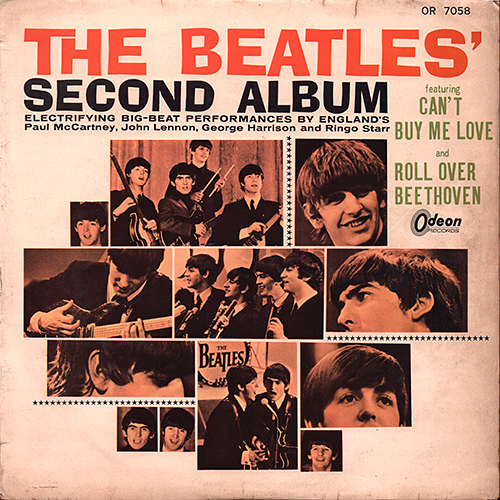 |
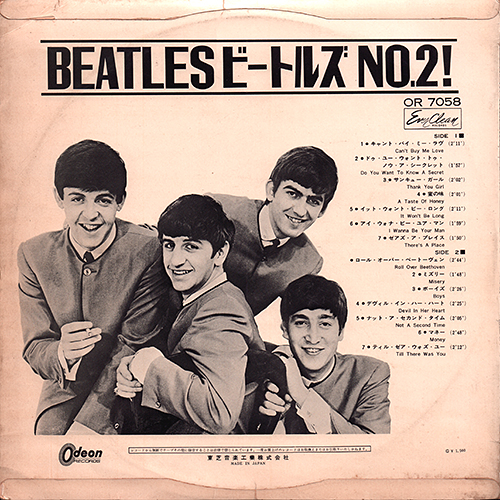 |
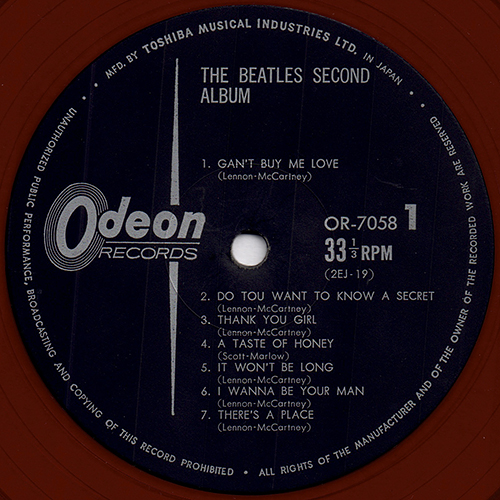 |
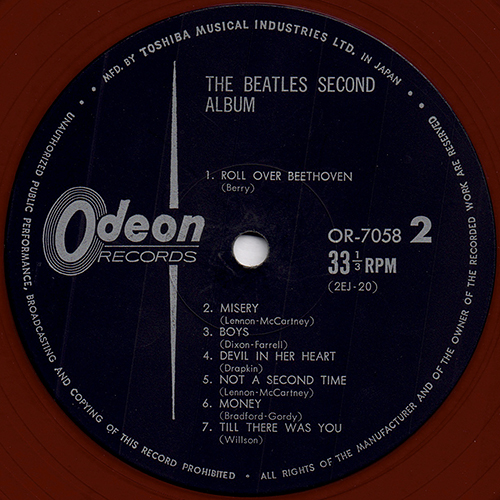 |
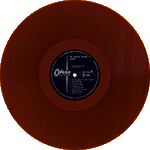 |
|
| INNER SLEEVE |
LYRIC
SHEET (Slip Sheet Type)
|
The
original
colour "advert" inner bag has a fold-over flap at the top of
the bag to prevent the record from falling out. The lyric sheet is slip sheet type. |
|||
| FRONT --> Click! | BACK --> Click! | FRONT --> Click! | BACK --> Click! | ||
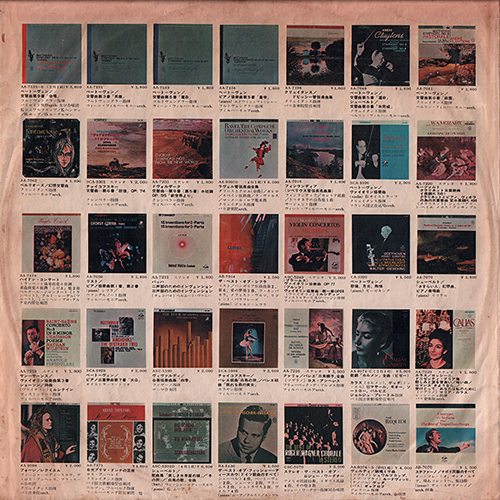 |
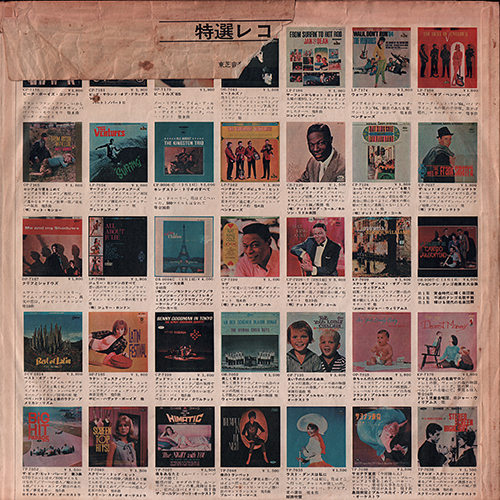 |
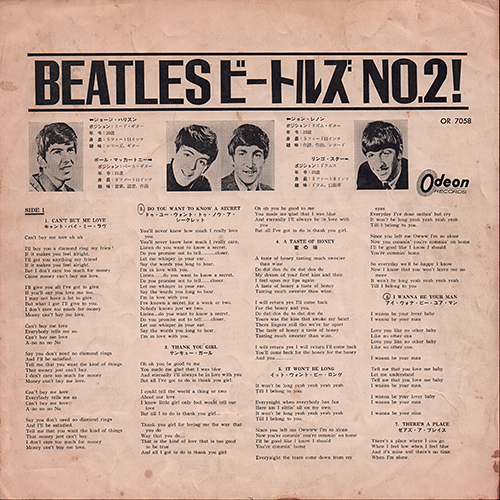 |
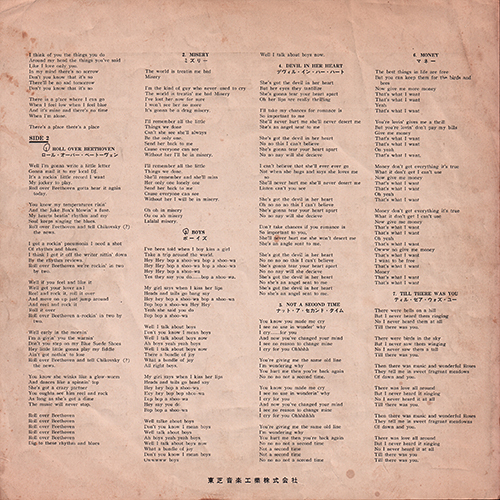 |
||
| INNER SLEEVE CLOSE UP |
LYRIC SHEET CLOSE UP | ||||
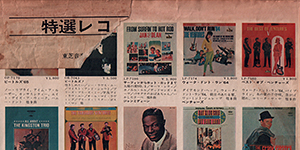 |
 |
 |
|||
| Catalog number and the company name "Toshiba Musical Industries Ltd." were printed on the lyric sheet. | |||||
| "LIGHT BLUE (V-Shape)" OBI CLOSE UP | |||||
| FRONT | BACK
|
||||
| Sorry, I don't have it. 2nd. pressing had a light blue / white so called "Sankaku"(triangle) or "V-shape" OBI and priced ¥1500 on rear sleeve and obi strip. |
|||||
| FRONT COVER CLOSE UP | BACK COVER CLOSE UP | ||||
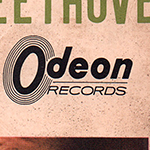 |
 |
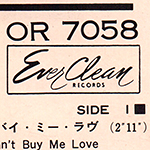 |
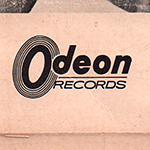 |
Toshiba pressed a lot of their records on red, “Everclean” vinyl. The Everclean vinyl was designed to be less prone to collecting static electricity and dust than the more common black vinyl. | |
| Odeon
logo mark and catalog number "OR 7058" were printed on the
front sleeve. |
|||||
| BACK COVER CLOSE UP | |||||
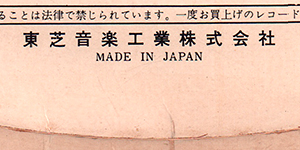 |
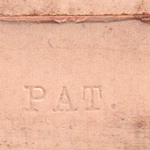 |
Single
type.
Full laminated soft cover. Twin-flipback cover (round type). The words "PAT." was embossed at the bottom of the back cover. |
 |
||
| "Toshiba Musical Industries Ltd." and "G-¥1,500" were printed at the bottom of the back cover. | |||||
| LABEL CLOSE UP | |||||
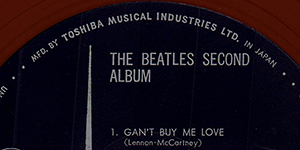 |
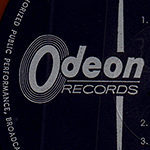 |
Toshiba
pressed a lot of their records on red, "Everclean" vinyl
from 1958 through 1974 (maybe). The Everclean vinyl
was designed to be less prone to collecting static
electricity and dust than the more common black vinyl. The
words "MFD. BY TOSHIBA MUSICAL INDUSTRIES LTD. IN JAPAN" was
printed at the perimeter. |
|||
| LABEL CLOSE UP | |||||
 |
About the song title of the 1st. song on side-1, this label was misprinted "GAN'T BUY ME LOVE" instead of "CAN'T BUY ME LOVE" | ||||
| LABEL CLOSE UP | |||||
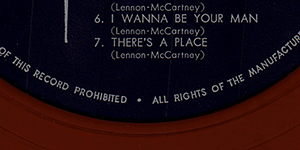 |
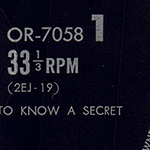 |
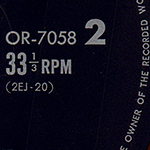 |
The words "LONG PLAYING" was erased at the bottom of
the label. Catalog number and matrix number were printed at the right side of the center hole. |
||
|
OTHER ITEM
|
|||||
| - | |||||
| RECORD LABEL | Odeon Label Type-2 (without the words "LONG
PLAYING") |
||||
| MIX | MONO |
||||
| MATRIX No. | SIDE 1 | 2EJ-19 20 |
|||
| SIDE 2 | 2EJ-20
17 |
||||
| PRESS MARK | 6C |
||||
| VINYL COLOR | RED |
||||
| RECORD COMPANY'S NAME | SLEEVE | Toshiba
Ongaku kogyo Kabusikigaisha |
|||
| LABEL | MFD. BY
TOSHIBA MUSICAL INDUSTRIES LTD. IN JAPAN |
||||
| SYMBOL/PRICE | G -
¥1,500 |
||||
| LYRIC SHEET STYLE | Slip Sheet Type |
||||
| COVER FORM | Single type. Full laminated soft cover. Twin-flipback cover (round type) |
||||
| INNER SLEEVE |
The original colour "advert" inner bag Type-3 | ||||
| OBI |
Light blue / white so called "Sankaku"
(triangle) or "V-shape" OBI |
||||
| COVER DESIGN/ PHOTO/ NOTES | - |
||||
|
COMMENTS
|
Black Odeon label with
silver print. The words "LONG PLAYING" was erased at the bottom of the label. Toshiba released the first Japanese record featuring the Beatles. When this record was released in 1964, Toshiba's official name was "Toshiba Musical Industries Ltd." and they used the Odeon label for this and subsequent Beatles releases. This is the second album released in Japan. The Japanese version looks similar to the U.S. version but has a different track listing, a red (rather than brown) front cover title, and a different back cover. Red vinyl: Besides good sound and quality printing, Japanese records also offered some other things of interest to the collector. One of the primary manufacturing companies in Japan, Toshiba, pressed a lot of their records on red, “Everclean” vinyl from 1958 through 1974 (maybe). While not pressed as collectors’ items, these red vinyl pressings are more sought out by collectors than their black vinyl counterparts. The Everclean vinyl was designed to be less prone to collecting static electricity and dust than the more common black vinyl. The obi: A. K. A."V-shape" Obi 2nd. pressing had a light blue/white so called "Sankaku"(triangle) or "V-shape" OBI and priced ¥1500 on rear sleeve and obi strip. It also features an Odeon logo, catalogue number and price information. Only issued briefly in 1966 August till November. Soon, price changed ¥1,700 (stickered on old price, subsequently printed on rear sleeve) with different obi (green arrow obi) and different catalog number (OR-8027). While most Japanese records feature local music, a lot of music fans there like foreign music, as well. The language barrier in Japan presented a problem – should foreign album covers be changed for Japanese albums? The solution was the obi, which means “belt” or “sash”. The obi is a strip of paper, usually about two inches wide, that wraps vertically around the album cover, containing information about the artist and album in Japanese. As these strips of paper were fragile and easily torn, they are often missing, especially since consumers in the 1950s and 1960s attached little significance to them. Finding Japanese records made prior to 1970 that still have the obi intact can be quite difficult, and for some albums, nearly impossible. The inclusion of the obi can dramatically affect the price of some Japanese records, sometimes increasing the price by a factor of ten. |
||||
| TITLE | THE BEATLES'
SECOND ALBUM (BEATLES NO.2!) |
||||
| CATALOG NUMBER | OR-8027 |
||||
| RELEASE DATE | November
1967?
/ Third Press |
||||
| TRACK LISTING | SIDE 1 | SIDE 2 | |||
| Can't Buy Me Love |
Roll Over Beethoven |
||||
| Do You Want To Know A Secret |
Misery |
||||
| Thank You Girl |
Boys |
||||
| A Taste Of Honey |
Devil In Her Heart |
||||
| It Won't Be Long |
Not A Second Time |
||||
| I Wanna Be Your Man |
Money | ||||
| There's A Place | Till There Was You |
||||
| FRONT --> Click! | BACK --> Click! | SIDE 1 --> Click! | SIDE 2 --> Click! | DISK | |
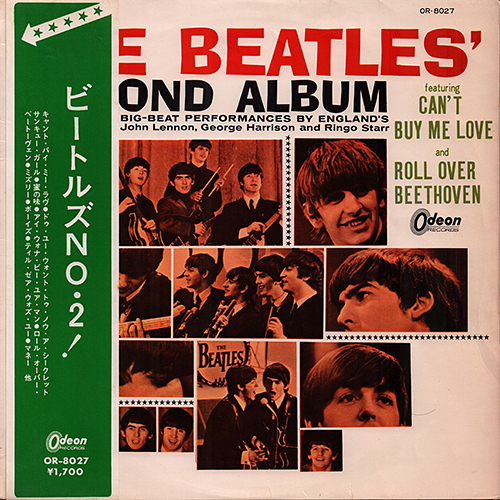 |
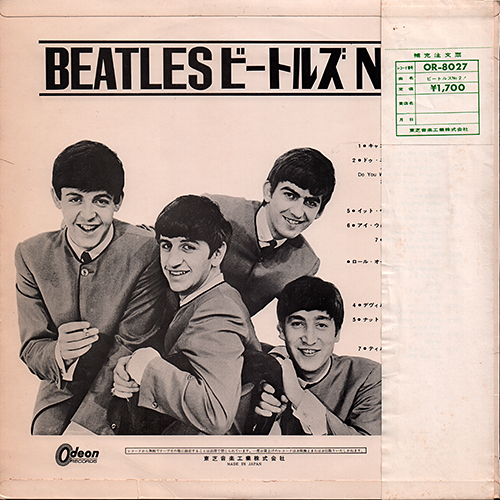 |
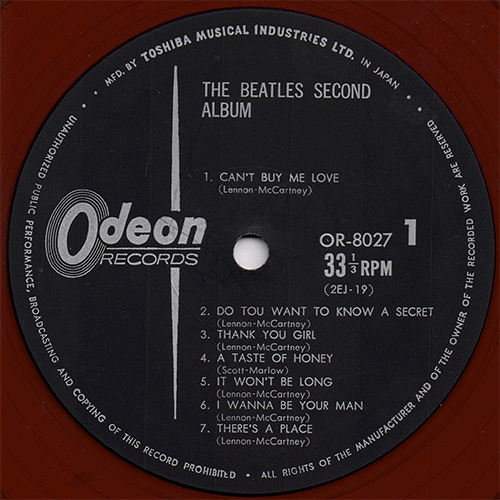 |
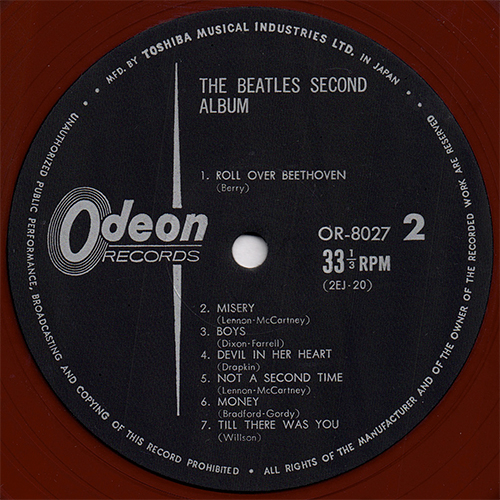 |
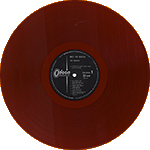 |
|
| INNER SLEEVE |
LYRIC
SHEET (Slip Sheet Type)
|
The
original
colour "advert" inner bag has a fold-over flap at the top of
the bag to prevent the record from falling out. The lyric sheet is slip sheet type. |
|||
| FRONT --> Click! | BACK --> Click! | FRONT --> Click! | BACK --> Click! | ||
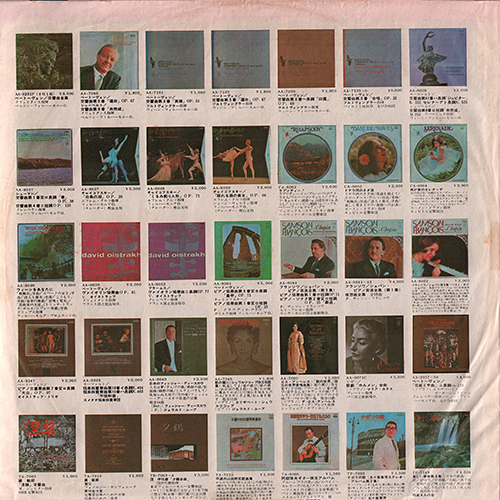 |
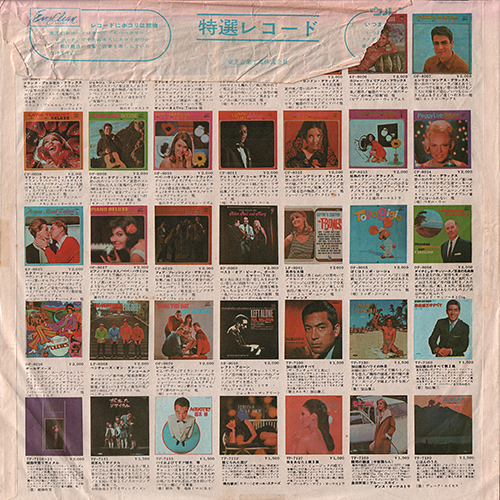 |
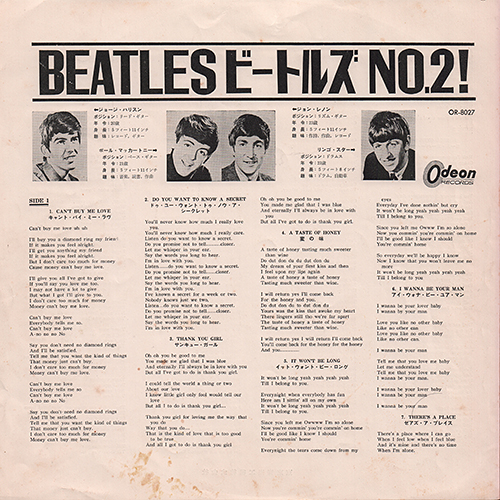 |
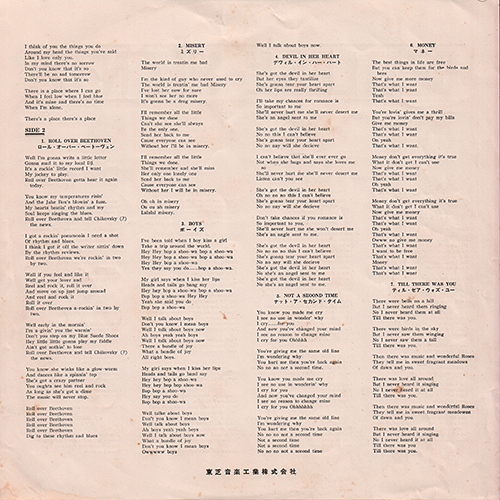 |
||
| LYRIC SHEET CLOSE
UP |
|||||
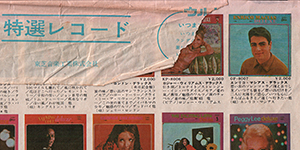 |
 |
 |
|||
| Catalog number "OR-8027" and the company name "Toshiba Musical Industries Ltd." were printed on the lyric sheet. | |||||
| "Odeon Green Arrow OBI" CLOSE UP | |||||
| FRONT |
BACK --> Click! | ||||
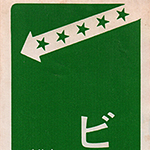 |
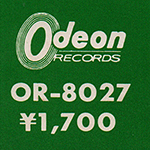 |
3rd.
pressing
had a green "arrow" OBI and priced ¥1,700 on rear
sleeve and obi strip. |
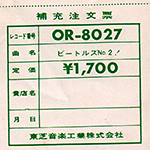 |
The obi remains intact
with the order form on the back uncut. |
|
| FRONT COVER CLOSE UP | BACK COVER CLOSE UP | ||||
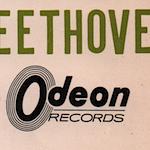 |
 |
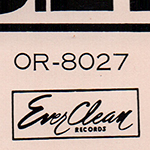 |
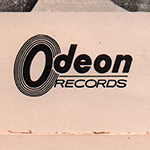 |
Toshiba pressed a lot of their records on red, “Everclean” vinyl. The Everclean vinyl was designed to be less prone to collecting static electricity and dust than the more common black vinyl. | |
| Odeon
logo mark and catalog number "OR 8027" were printed on the
front sleeve. |
|||||
| BACK COVER CLOSE UP | |||||
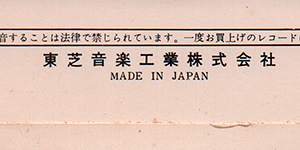 |
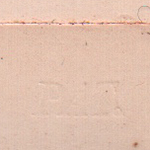 |
Single
type.
Full laminated soft cover. Twin-flipback cover (straight type). The words "PAT." was embossed at the bottom of the back cover. |
 |
||
| "Toshiba Musical Industries Ltd." and "H-¥1,700" were printed at the bottom of the back cover. | |||||
| LABEL CLOSE UP | |||||
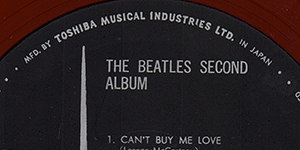 |
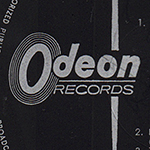 |
Toshiba
pressed a lot of their records on red, "Everclean" vinyl
from 1958 through 1974 (maybe). The Everclean vinyl
was designed to be less prone to collecting static
electricity and dust than the more common black vinyl. The
words "MFD. BY TOSHIBA MUSICAL INDUSTRIES LTD. IN JAPAN" was
printed at the perimeter. |
|||
| LABEL CLOSE UP | |||||
 |
About the song title of the 2nd. song on side-1, this label was corrected "CAN'T BUY ME LOVE" instead of "THE GAN'T BUY ME LOVE". | ||||
| LABEL CLOSE UP | |||||
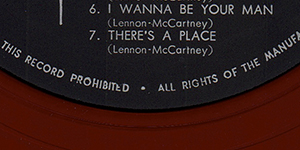 |
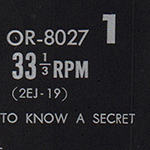 |
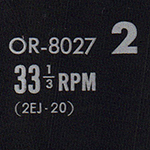 |
The words "LONG PLAYING" was erased at the bottom of
the label. Catalog number "OR-8027"and matrix number were printed at the right side of the center hole. |
||
|
OTHER ITEM
|
|||||
| - | |||||
| RECORD LABEL | Odeon Label Type-2 (without the words "LONG
PLAYING") |
||||
| MIX | MONO |
||||
| MATRIX No. | SIDE 1 | 2EJ-19 27 |
|||
| SIDE 2 | 2EJ-20
2S 4 |
||||
| PRESS MARK | 6L
-> 7L |
||||
| VINYL COLOR | RED |
||||
| RECORD COMPANY'S NAME | SLEEVE | Toshiba
Ongaku kogyo Kabusikigaisha |
|||
| LABEL | MFD. BY
TOSHIBA MUSICAL INDUSTRIES LTD. IN JAPAN |
||||
| SYMBOL/PRICE | H - ¥1,700 |
||||
| LYRIC SHEET STYLE | Slip Sheet Type |
||||
| COVER FORM | Single type. Full laminated soft cover. Twin-flipback cover (straight type) |
||||
| INNER SLEEVE |
The original colour "advert" inner bag
Type-5 |
||||
| OBI |
Green / white so called "Odeon Arrow" OBI |
||||
| COVER DESIGN/ PHOTO/ NOTES | - |
||||
|
COMMENTS
|
Black Odeon label with
silver print. The words "LONG PLAYING" was erased at the bottom of the label. This is the second album released in Japan. The Japanese version looks similar to the U.S. version but has a different track listing, a red (rather than brown) front cover title, and a different back cover. In 1967, the price of LPs rose, and the price of monaural LPs rose from 1,500 yen to 1,700 yen. Already released Beatles LPs have been reissued with record numbers changed to the OP-8000 series and prices increased. The obi has also been changed to an arrow obi. Red vinyl: Besides good sound and quality printing, Japanese records also offered some other things of interest to the collector. One of the primary manufacturing companies in Japan, Toshiba, pressed a lot of their records on red, “Everclean” vinyl from 1958 through 1974 (maybe). While not pressed as collectors’ items, these red vinyl pressings are more sought out by collectors than their black vinyl counterparts. The Everclean vinyl was designed to be less prone to collecting static electricity and dust than the more common black vinyl. The obi: A. K. A."Arrow" Obi 3rd. pressing had a green / white so called "Arrow" OBI and priced ¥1,700 on rear sleeve and obi strip. On June 1967, starting with "Oldies (OP-8016)", numbering for new Odeon LPs changed to the 8000 range numbers. So Obis were renew, A.K.A. Odeon "Arrow Obi" in green and with the same design as the Apple Obis. While most Japanese records feature local music, a lot of music fans there like foreign music, as well. The language barrier in Japan presented a problem – should foreign album covers be changed for Japanese albums? The solution was the obi, which means “belt” or “sash”. The obi is a strip of paper, usually about two inches wide, that wraps vertically around the album cover, containing information about the artist and album in Japanese. As these strips of paper were fragile and easily torn, they are often missing, especially since consumers in the 1950s and 1960s attached little significance to them. Finding Japanese records made prior to 1970 that still have the obi intact can be quite difficult, and for some albums, nearly impossible. The inclusion of the obi can dramatically affect the price of some Japanese records, sometimes increasing the price by a factor of ten. |
||||
| TITLE | THE BEATLES'
SECOND ALBUM (BEATLES NO.2!) |
||||
| CATALOG NUMBER | OR-8027 |
||||
| RELEASE DATE | May
1968?
/ 4th. Press / Gramophone Contract Press |
||||
| TRACK LISTING | SIDE 1 | SIDE 2 | |||
| Can't Buy Me Love |
Roll Over Beethoven |
||||
| Do You Want To Know A Secret |
Misery |
||||
| Thank You Girl |
Boys |
||||
| A Taste Of Honey |
Devil In Her Heart |
||||
| It Won't Be Long |
Not A Second Time |
||||
| I Wanna Be Your Man |
Money | ||||
| There's A Place | Till There Was You |
||||
| FRONT --> Click! | BACK --> Click! | SIDE 1 --> Click! | SIDE 2 --> Click! | DISK | |
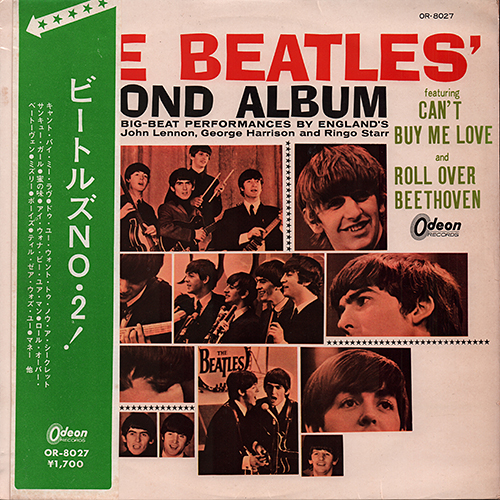 |
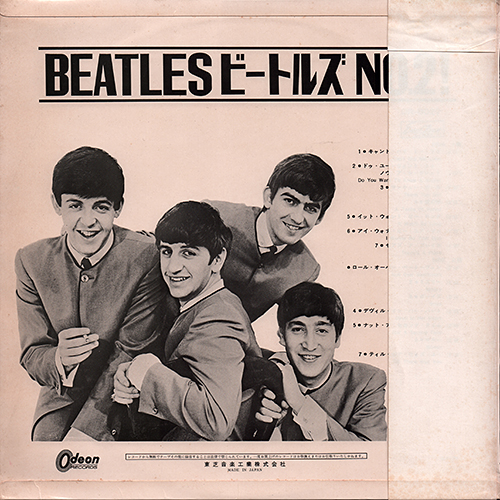 |
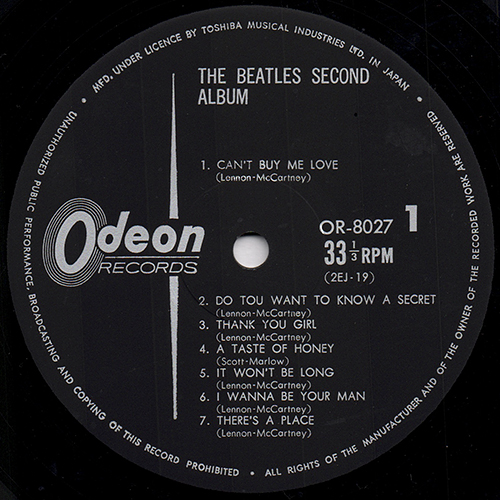 |
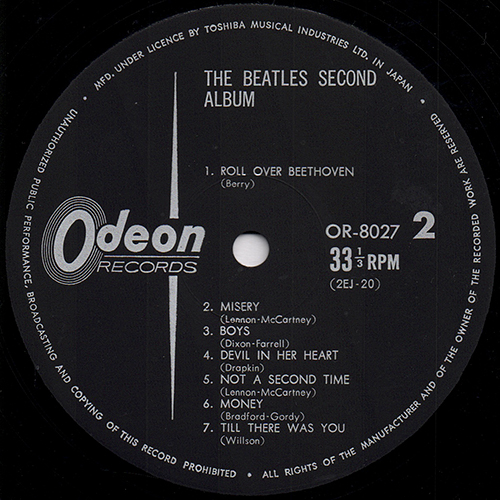 |
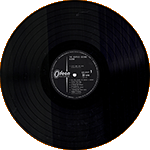 |
|
| INNER SLEEVE |
LYRIC
SHEET (Slip Sheet Type)
|
The
original
colour "advert" inner bag has a fold-over flap at the top of
the bag to prevent the record from falling out. The lyric sheet is slip sheet type. |
|||
| FRONT --> Click! | BACK --> Click! | FRONT --> Click! | BACK --> Click! | ||
 |
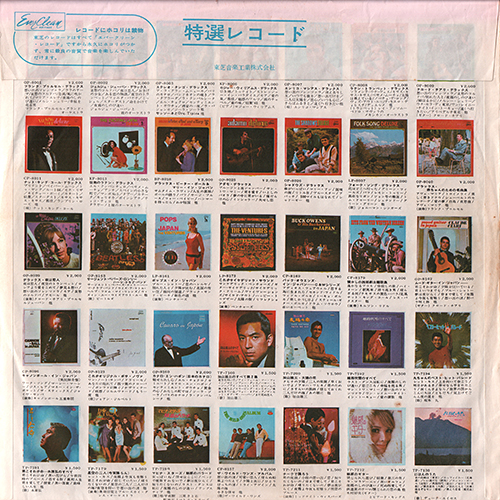 |
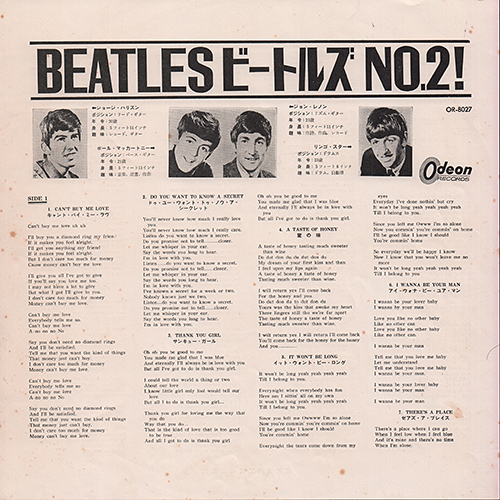 |
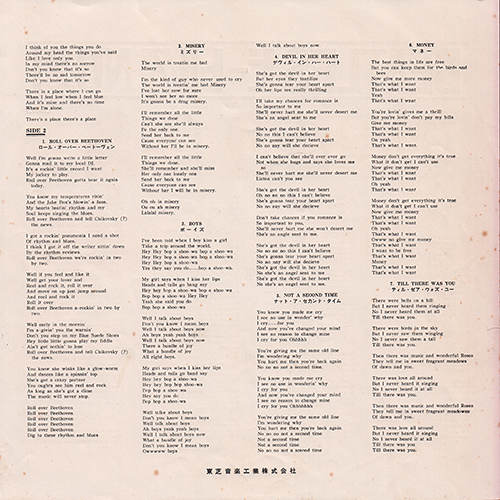 |
||
| LYRIC SHEET CLOSE
UP |
|||||
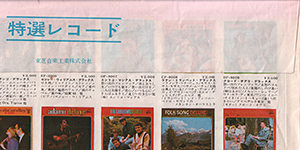 |
 |
 |
|||
| Catalog number "OR-8027" and the company name "Toshiba Musical Industries Ltd." were printed on the lyric sheet. | |||||
| "Odeon Green Arrow OBI" CLOSE UP | |||||
| FRONT |
BACK |
||||
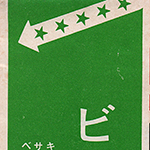 |
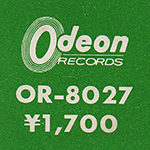 |
4th.
pressing
had a green "arrow" OBI and priced ¥1,700 on rear
sleeve and obi strip. |
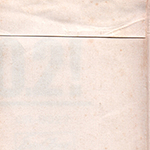 |
The order form was cut off
from the obi. |
|
| FRONT COVER CLOSE UP | BACK COVER CLOSE UP | ||||
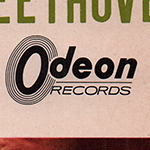 |
 |
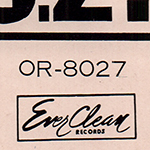 |
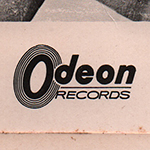 |
Toshiba pressed a lot of their records on red, “Everclean” vinyl. The Everclean vinyl was designed to be less prone to collecting static electricity and dust than the more common black vinyl. | |
| Odeon
logo mark and catalog number "OR 8027" were printed on the
front sleeve. |
|||||
| BACK COVER CLOSE UP | |||||
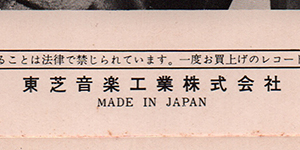 |
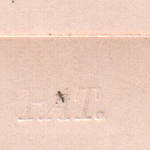 |
Single
type.
Full laminated soft cover. Twin-flipback cover (straight type). The words "PAT. (Italic)" was embossed at the bottom of the back cover. |
 |
||
| "Toshiba Musical Industries Ltd." and "H-¥1,700" were printed at the bottom of the back cover. | |||||
| LABEL CLOSE UP | |||||
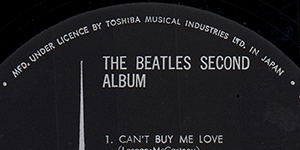 |
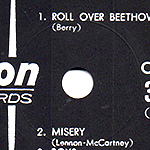 |
Sometimes
Toshiba had problems to press enough records to keep up with
the demand. To increase production they turned to other
companies (ex. Gramophone,
Victor, King Records, and SONY) to press up some
copies of a particular release. The words "MFD. UNDER LICENCE BY TOSHIBA MUSICAL INDUSTRIES LTD. IN JAPAN" was printed at the perimeter. |
|||
| LABEL CLOSE UP | |||||
 |
About the song title of the 2nd. song on side-1, this label was corrected "CAN'T BUY ME LOVE" instead of "THE GAN'T BUY ME LOVE". | ||||
| LABEL CLOSE UP | |||||
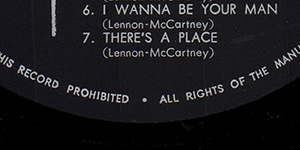 |
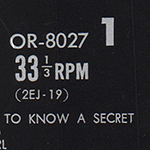 |
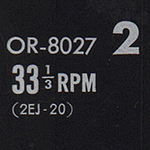 |
The words "LONG PLAYING" was erased at the bottom of
the label. Catalog number "OR-8027"and matrix number were printed at the right side of the center hole. |
||
| LABEL CLOSE UP | |||||
 |
Press
Mark:
"EG8" was embossed
at the dead wax of side-1 |
||||
|
OTHER ITEM
|
|||||
| - | |||||
| RECORD LABEL | Odeon Label Type-3 ("MFD. UNDER LICENCE BY TOSHIBA"
rim) Gramophone Contract Press |
||||
| MIX | MONO |
||||
| MATRIX No. | SIDE 1 | 2EJ-19 2S 2 |
|||
| SIDE 2 | 2EJ-20
2S 2 |
||||
| PRESS MARK | EG8 |
||||
| VINYL COLOR | BLACK |
||||
| RECORD COMPANY'S NAME | SLEEVE | Toshiba
Ongaku kogyo Kabusikigaisha |
|||
| LABEL | MFD. UNDER LICENCE BY TOSHIBA
MUSICAL INDUSTRIES LTD. IN JAPAN |
||||
| SYMBOL/PRICE | H - ¥1,700 |
||||
| LYRIC SHEET STYLE | Slip Sheet Type |
||||
| COVER FORM | Single type. Full laminated soft cover. Twin-flipback cover (straight type) |
||||
| INNER SLEEVE |
The original colour "advert" inner bag
Type-6-2 |
||||
| OBI |
Green / white so called "Odeon Arrow" OBI |
||||
| COVER DESIGN/ PHOTO/ NOTES | - |
||||
|
COMMENTS
|
Black Odeon Type-3
label with silver print. The words "MFD. UNDER LICENCE BY TOSHIBA MUSICAL INDUSTRIES LTD. IN JAPAN" was printed at the perimeter. The words "LONG PLAYING" was erased at the bottom of the label. In 1967, the price of LPs rose, and the price of monaural LPs rose from 1,500 yen to 1,700 yen. Already released Beatles LPs have been reissued with record numbers changed to the OP-8000 series and prices increased. The obi has also been changed to an arrow obi. Sometimes Toshiba had problems to press enough records to keep up with the demand. To increase production they turned to other companies (ex. Gramophone, Victor, King Records, and SONY) to press up some copies of a particular release. This is the second album released in Japan. The Japanese version looks similar to the U.S. version but has a different track listing, a red (rather than brown) front cover title, and a different back cover. Red vinyl: Besides good sound and quality printing, Japanese records also offered some other things of interest to the collector. One of the primary manufacturing companies in Japan, Toshiba, pressed a lot of their records on red, “Everclean” vinyl from 1958 through 1974 (maybe). While not pressed as collectors’ items, these red vinyl pressings are more sought out by collectors than their black vinyl counterparts. The Everclean vinyl was designed to be less prone to collecting static electricity and dust than the more common black vinyl. The obi: A. K. A."Arrow" Obi 4th. pressing had a green / white so called "Arrow" OBI and priced ¥1,700 on rear sleeve and obi strip. On June 1967, starting with "Oldies (OP-8016)", numbering for new Odeon LPs changed to the 8000 range numbers. So Obis were renew, A.K.A. Odeon "Arrow Obi" in green and with the same design as the Apple Obis. While most Japanese records feature local music, a lot of music fans there like foreign music, as well. The language barrier in Japan presented a problem – should foreign album covers be changed for Japanese albums? The solution was the obi, which means “belt” or “sash”. The obi is a strip of paper, usually about two inches wide, that wraps vertically around the album cover, containing information about the artist and album in Japanese. As these strips of paper were fragile and easily torn, they are often missing, especially since consumers in the 1950s and 1960s attached little significance to them. Finding Japanese records made prior to 1970 that still have the obi intact can be quite difficult, and for some albums, nearly impossible. The inclusion of the obi can dramatically affect the price of some Japanese records, sometimes increasing the price by a factor of ten. |
||||
| TITLE | THE BEATLES'
SECOND ALBUM (BEATLES NO.2!) |
||||
| CATALOG NUMBER | AR-8027 |
||||
| RELEASE DATE | September
1970?
/ 5th. Press |
||||
| TRACK LISTING | SIDE 1 | SIDE 2 | |||
| Can't Buy Me Love |
Roll Over Beethoven |
||||
| Do You Want To Know A Secret |
Misery |
||||
| Thank You Girl |
Boys |
||||
| A Taste Of Honey |
Devil In Her Heart |
||||
| It Won't Be Long |
Not A Second Time |
||||
| I Wanna Be Your Man |
Money | ||||
| There's A Place | Till There Was You |
||||
| FRONT --> Click! | BACK --> Click! | SIDE 1 --> Click! | SIDE 2 --> Click! | DISK | |
 |
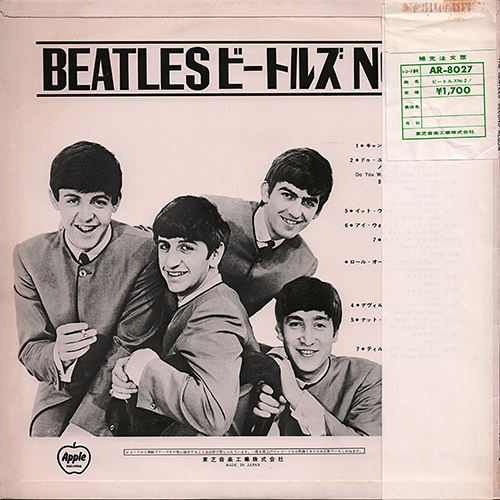 |
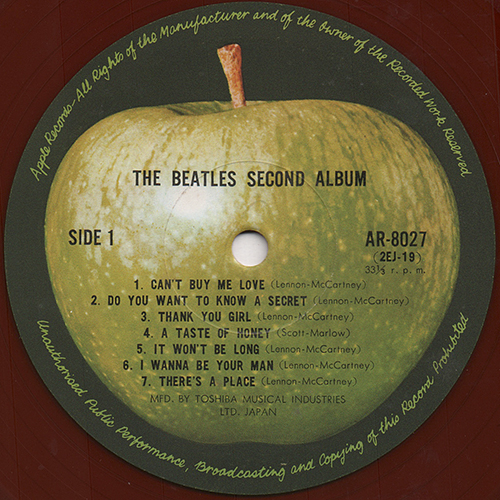 |
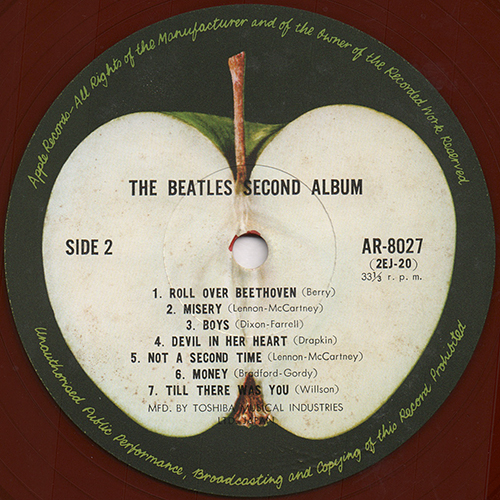 |
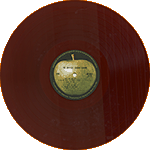 |
|
| INNER SLEEVE |
LYRIC
SHEET (Slip Sheet Type)
|
The
original
colour "advert" inner bag has a fold-over flap at the top of
the bag to prevent the record from falling out. The lyric sheet is slip sheet type. |
|||
| FRONT --> Click! | BACK --> Click! | ||||
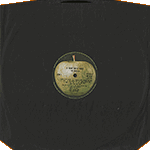 |
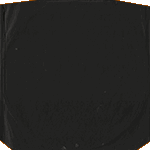 |
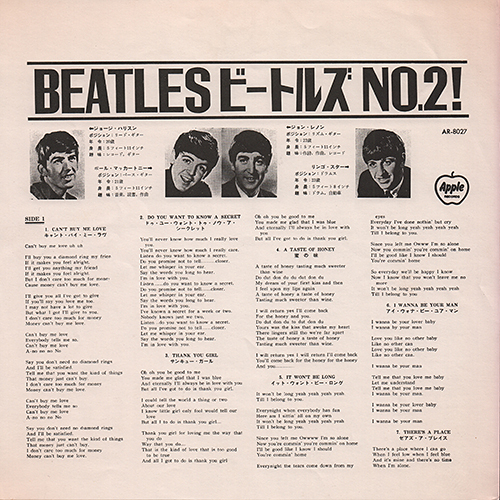 |
 |
||
| LYRIC SHEET CLOSE
UP |
|||||
 |
 |
Catalog number "AR-8027" and the company name "Toshiba Musical Industries Ltd." were printed on the lyric sheet. | |||
| "Odeon Green Arrow OBI" CLOSE UP | |||||
| FRONT |
BACK --> Click! | ||||
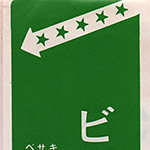 |
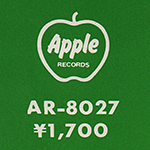 |
5th.
pressing
had a green "arrow" OBI and priced ¥1,700 on rear
sleeve and obi strip. |
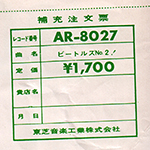 |
The order form was cut off
from the obi. |
|
| FRONT COVER CLOSE UP | BACK COVER CLOSE UP | ||||
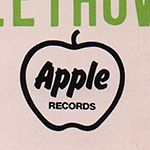 |
 |
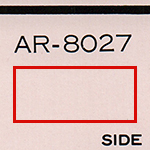 |
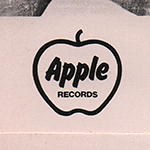 |
"Ever Clean" logo was removed from the back cover. | |
| Odeon
logo mark and catalog number "AR 8027" were printed on the
front sleeve. |
|||||
| BACK COVER CLOSE UP | |||||
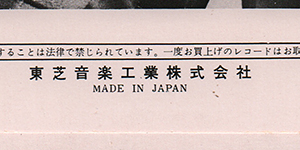 |
Single
type.
Full laminated soft cover. Twin-flipback cover (straight type). "Toshiba Musical Industries Ltd." was printed at the bottom of the back cover. |
 |
|||
| "H-¥1,700" were printed at the bottom of the back cover. | |||||
| LABEL CLOSE UP | |||||
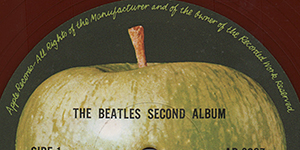 |
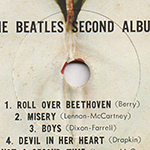 |
In 1969,
Toshiba had to reissue on the Apple label all the records
previously issued on the Odeon label. The phrase "Apple Records - All Rights of the Manufacturer and of the Owner of the Recorded work Reserved." was printed at the perimeter. |
|||
| LABEL CLOSE UP | |||||
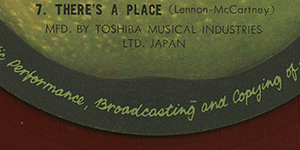 |
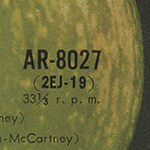 |
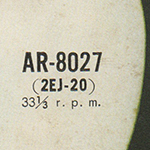 |
The words "MFD. BY TOSHIBA
MUSICAL INDUSTRIES LTD. JAPAN" was printed at the bottom of
the label. Catalog number "AR-8027" and matrix number were printed at the right side of the center hole. |
||
|
OTHER ITEM
|
|||||
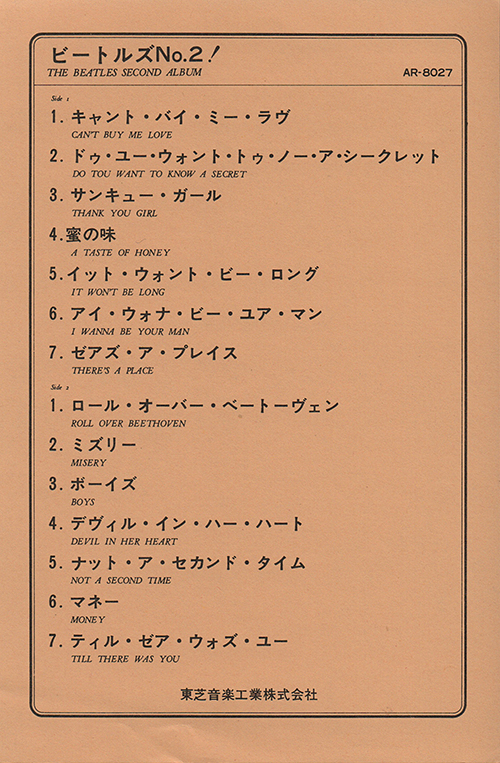 |
 |
 |
|||
| With a track list sheet. |
|||||
| RECORD LABEL | Dark Green Apple label Type-1 |
||||
| MIX | MONO |
||||
| MATRIX No. | SIDE 1 | 2EJ-19 2S
2 3 |
|||
| SIDE 2 | 2EJ-20
2S 2 4 |
||||
| PRESS MARK | 0H
-> 0J |
||||
| VINYL COLOR | RED |
||||
| RECORD COMPANY'S NAME | SLEEVE | Toshiba
Ongaku kogyo Kabusikigaisha |
|||
| LABEL | MFD. BY
TOSHIBA MUSICAL INDUSTRIES LTD. JAPAN |
||||
| SYMBOL/PRICE | H - ¥1,700 |
||||
| LYRIC SHEET STYLE | Slip Sheet Type |
||||
| COVER FORM | Single type. Full laminated soft cover. Twin-flipback cover (straight type) |
||||
| INNER SLEEVE |
Apple custom black sleeve |
||||
| OBI |
Green / white so called "Apple Arrow" OBI |
||||
| COVER DESIGN/ PHOTO/ NOTES | - |
||||
|
COMMENTS
|
Dark green Apple label
Type-1with black print. In late (September?)1969, Toshiba had to reissue on the Apple label all the records previously issued on the Odeon label. And in the Apple label, there are two subtypes, TOSHIBA MUSIC and TOSHIBA EMI. Further more, the early copies of the APPLE-TOSHIBA MUSIC type have dark Apple on its label, though the late copies have light one. Red vinyl: Besides good sound and quality printing, Japanese records also offered some other things of interest to the collector. One of the primary manufacturing companies in Japan, Toshiba, pressed a lot of their records on red, “Everclean” vinyl from 1958 through 1974 (maybe). While not pressed as collectors’ items, these red vinyl pressings are more sought out by collectors than their black vinyl counterparts. The Everclean vinyl was designed to be less prone to collecting static electricity and dust than the more common black vinyl. This LP was manufactured two ways: both Black and Red vinyl. The obi: A. K. A."Arrow" Obi 4th. 5th. and 6th. pressings had a green / white so called "Arrow" OBI and priced ¥1700 on rear sleeve and obi strip. On June 1967, starting with "Oldies (OP-8016)", numbering for new Odeon LPs changed to the 8000 range numbers. So Obis were renew, A.K.A. Odeon "Arrow Obi" in green and with the same design as the Apple Obis. While most Japanese records feature local music, a lot of music fans there like foreign music, as well. The language barrier in Japan presented a problem – should foreign album covers be changed for Japanese albums? The solution was the obi, which means “belt” or “sash”. The obi is a strip of paper, usually about two inches wide, that wraps vertically around the album cover, containing information about the artist and album in Japanese. As these strips of paper were fragile and easily torn, they are often missing, especially since consumers in the 1950s and 1960s attached little significance to them. Finding Japanese records made prior to 1970 that still have the obi intact can be quite difficult, and for some albums, nearly impossible. The inclusion of the obi can dramatically affect the price of some Japanese records, sometimes increasing the price by a factor of ten. |
||||
| TITLE | THE BEATLES'
SECOND ALBUM (BEATLES NO.2!) |
||||
| CATALOG NUMBER | AR-8027 |
||||
| RELEASE DATE | September
1972?
/ 6th. Press |
||||
| TRACK LISTING | SIDE 1 | SIDE 2 | |||
| Can't Buy Me Love |
Roll Over Beethoven |
||||
| Do You Want To Know A Secret |
Misery |
||||
| Thank You Girl |
Boys |
||||
| A Taste Of Honey |
Devil In Her Heart |
||||
| It Won't Be Long |
Not A Second Time |
||||
| I Wanna Be Your Man |
Money | ||||
| There's A Place | Till There Was You |
||||
| FRONT --> Click! | BACK --> Click! | SIDE 1 --> Click! | SIDE 2 --> Click! | DISK | |
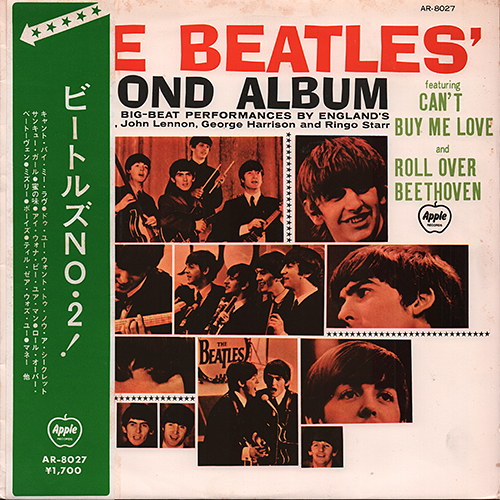 |
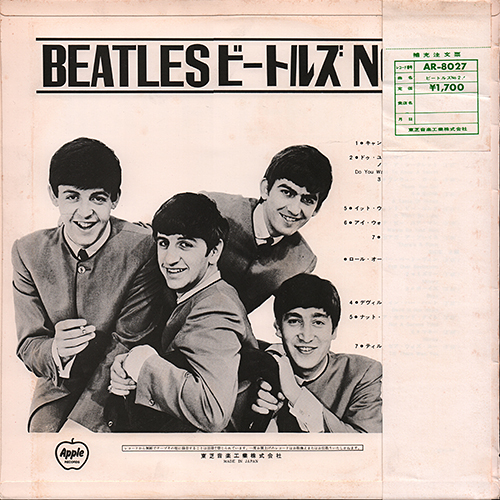 |
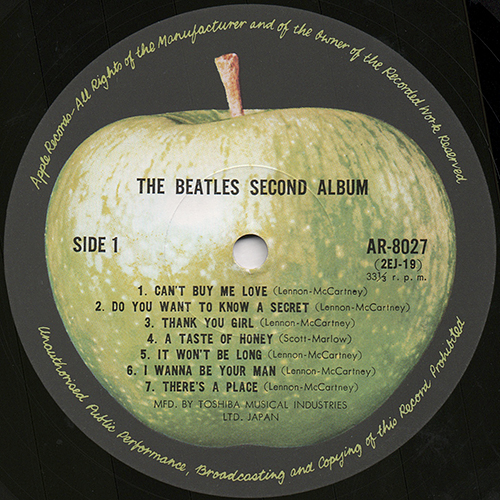 |
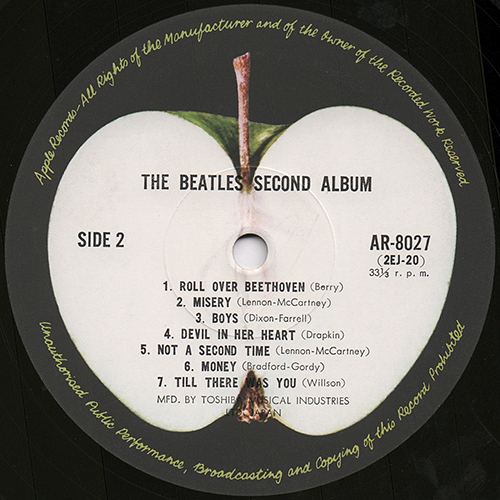 |
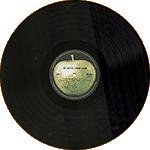 |
|
| INNER SLEEVE |
LYRIC
SHEET (Slip Sheet Type)
|
The
original
colour "advert" inner bag has a fold-over flap at the top of
the bag to prevent the record from falling out. The lyric sheet is slip sheet type. |
|||
| FRONT --> Click! | BACK --> Click! | ||||
 |
 |
 |
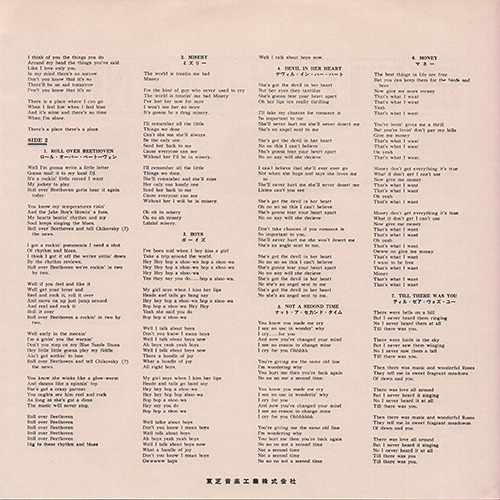 |
||
| LYRIC SHEET CLOSE
UP |
|||||
 |
 |
Catalog number "AR-8027" and the company name "Toshiba Musical Industries Ltd." were printed on the lyric sheet. | |||
| "Odeon Green Arrow OBI" CLOSE UP | |||||
| FRONT |
BACK --> Click! | ||||
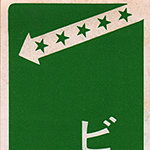 |
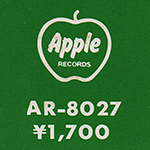 |
6th.
pressing
had a green "arrow" OBI and priced ¥1,700 on rear
sleeve and obi strip. |
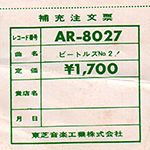 |
The order form was cut off
from the obi. |
|
| FRONT COVER CLOSE UP | BACK COVER CLOSE UP | ||||
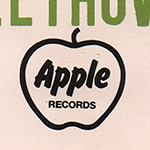 |
 |
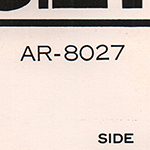 |
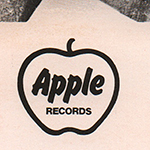 |
"Ever Clean" logo was removed from the back cover. | |
| Odeon
logo mark and catalog number "AR 8027" were printed on the
front sleeve. |
|||||
| BACK COVER CLOSE UP | |||||
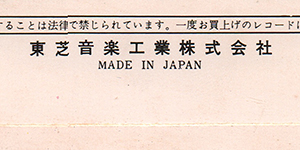 |
Single
type.
Full laminated soft cover. Twin-flipback cover (straight type). "Toshiba Musical Industries Ltd." was printed at the bottom of the back cover. |
 |
|||
| "H-¥1,700" were printed at the bottom of the back cover. | |||||
| LABEL CLOSE UP | |||||
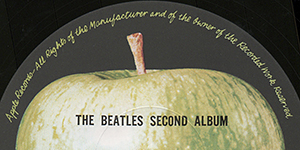 |
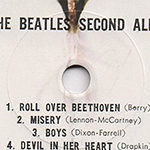 |
In 1969,
Toshiba had to reissue on the Apple label all the records
previously issued on the Odeon label. The phrase "Apple Records - All Rights of the Manufacturer and of the Owner of the Recorded work Reserved." was printed at the perimeter. |
|||
| LABEL CLOSE UP | |||||
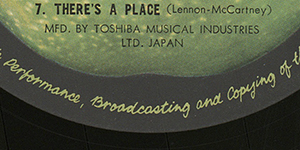 |
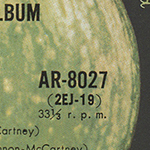 |
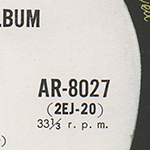 |
The words "MFD. BY TOSHIBA
MUSICAL INDUSTRIES LTD. JAPAN" was printed at the bottom of
the label. Catalog number "AR-8027" and matrix number were printed at the right side of the center hole. |
||
|
OTHER ITEM
|
|||||
| "GOLDEN DISK - PACK SERIES" Information Flyer | |||||
| FLYER: FRONT --> Click! | Insert
the "Golden Disk (LP)" and "Golden Pack (8-track or cassette
tape)" series information flyer. "Golden series" is Japan ONLY greatest hits compilation Double Album with embossed & textured thick gatefold book style Jacket & OBI. |
||||
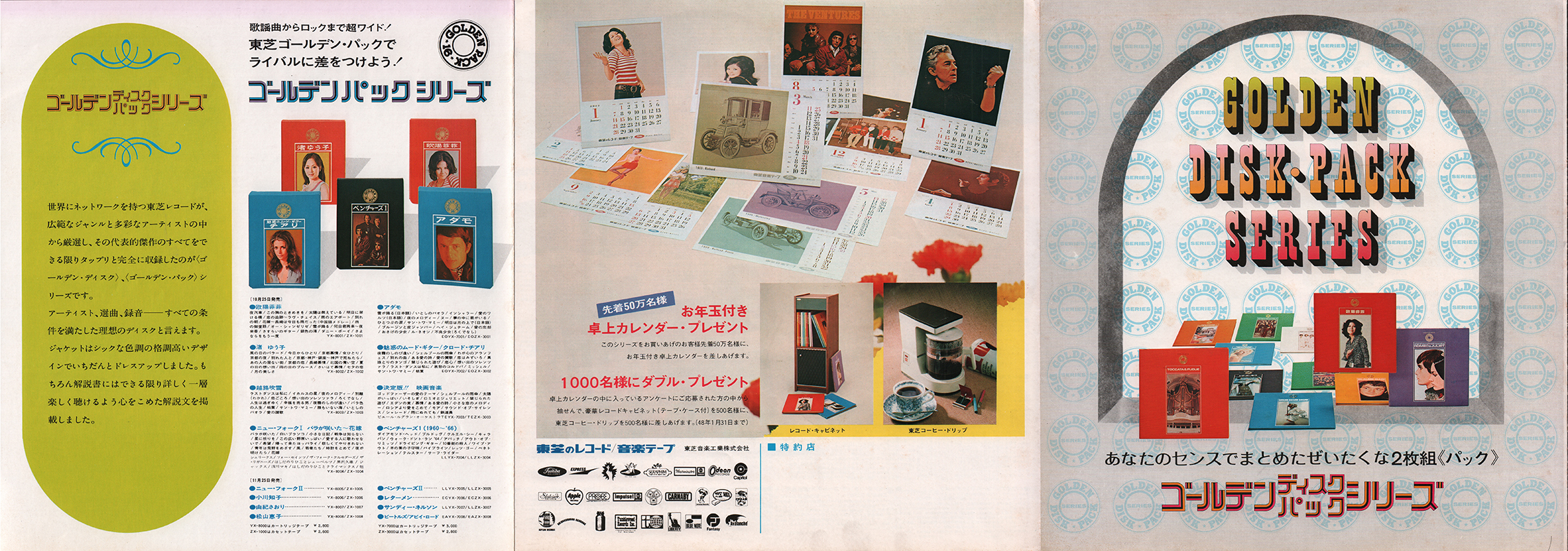 |
|||||
| FLYER: INSIDE --> Click! | TRACK LIST SHEET |
||||
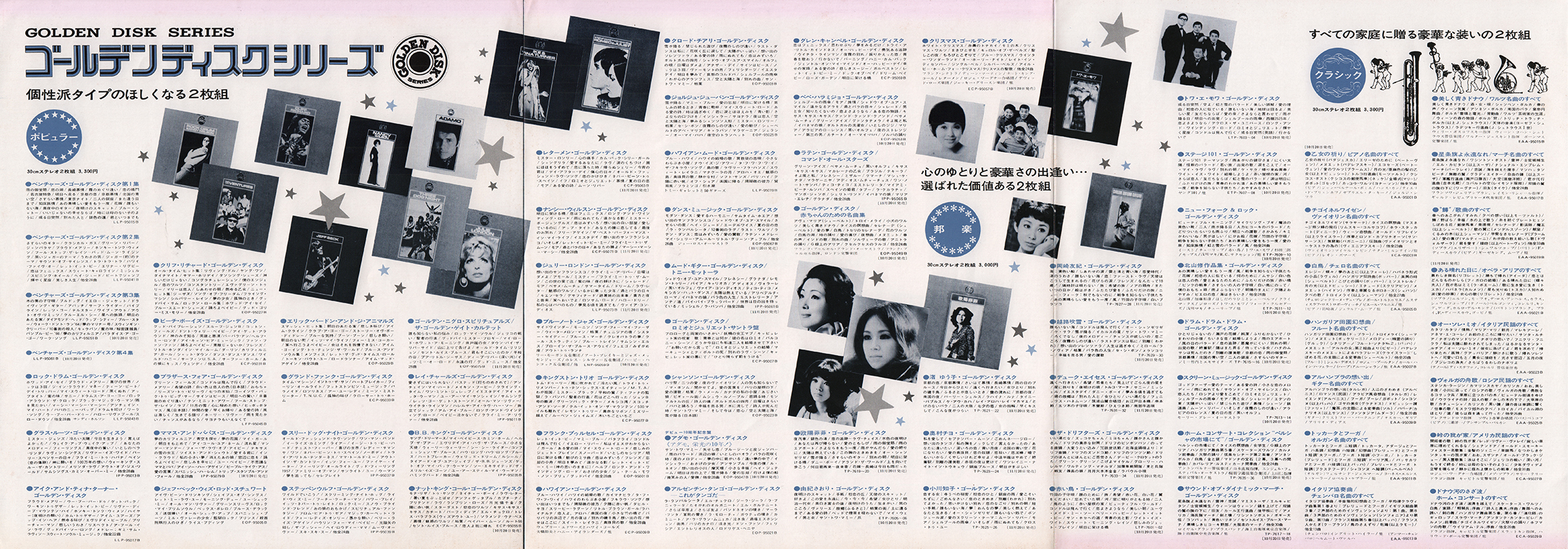 |
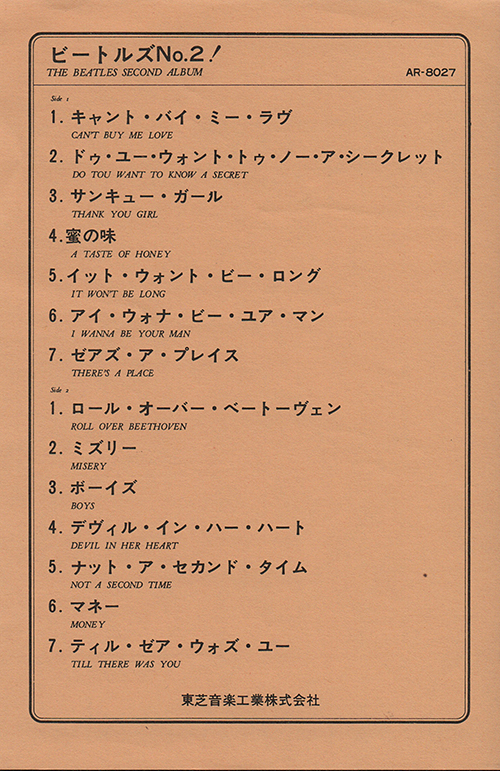 |
With a track list sheet. | |||
| RECORD LABEL | Light Green Apple label Type-2-1 |
||||
| MIX | MONO |
||||
| MATRIX No. | SIDE 1 | 2EJ-19 2S
2 13 |
|||
| SIDE 2 | 2EJ-20
2S 2 10 |
||||
| PRESS MARK | 2B
-> 2J |
||||
| VINYL COLOR | BLACK |
||||
| RECORD COMPANY'S NAME | SLEEVE | Toshiba
Ongaku kogyo Kabusikigaisha |
|||
| LABEL | MFD. BY
TOSHIBA MUSICAL INDUSTRIES LTD. JAPAN |
||||
| SYMBOL/PRICE | H - ¥1,700 |
||||
| LYRIC SHEET STYLE | Slip Sheet Type |
||||
| COVER FORM | Single type. Full laminated soft cover. Twin-flipback cover (straight type) |
||||
| INNER SLEEVE |
Apple custom black sleeve |
||||
| OBI |
Green / white so called "Apple Arrow" OBI |
||||
| COVER DESIGN/ PHOTO/ NOTES | - |
||||
|
COMMENTS
|
Light green Apple
label Type-1with black print. In late (September?)1969, Toshiba had to reissue on the Apple label all the records previously issued on the Odeon label. And in the Apple label, there are two subtypes, TOSHIBA MUSIC and TOSHIBA EMI. Further more, the early copies of the APPLE-TOSHIBA MUSIC type have dark Apple on its label, though the late copies have light one. Red vinyl: Besides good sound and quality printing, Japanese records also offered some other things of interest to the collector. One of the primary manufacturing companies in Japan, Toshiba, pressed a lot of their records on red, “Everclean” vinyl from 1958 through 1974 (maybe). While not pressed as collectors’ items, these red vinyl pressings are more sought out by collectors than their black vinyl counterparts. The Everclean vinyl was designed to be less prone to collecting static electricity and dust than the more common black vinyl. This LP was manufactured two ways: both Black and Red vinyl. The obi: A. K. A."Arrow" Obi 4th., 5th. and 6th. pressings had a green / white so called "Arrow" OBI and priced ¥1700 on rear sleeve and obi strip. On June 1967, starting with "Oldies (OP-8016)", numbering for new Odeon LPs changed to the 8000 range numbers. So Obis were renew, A.K.A. Odeon "Arrow Obi" in green and with the same design as the Apple Obis. While most Japanese records feature local music, a lot of music fans there like foreign music, as well. The language barrier in Japan presented a problem – should foreign album covers be changed for Japanese albums? The solution was the obi, which means “belt” or “sash”. The obi is a strip of paper, usually about two inches wide, that wraps vertically around the album cover, containing information about the artist and album in Japanese. As these strips of paper were fragile and easily torn, they are often missing, especially since consumers in the 1950s and 1960s attached little significance to them. Finding Japanese records made prior to 1970 that still have the obi intact can be quite difficult, and for some albums, nearly impossible. The inclusion of the obi can dramatically affect the price of some Japanese records, sometimes increasing the price by a factor of ten. |
||||
